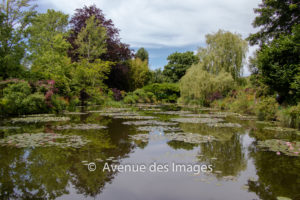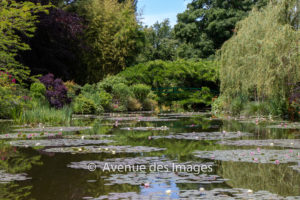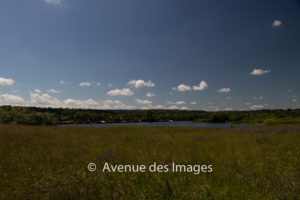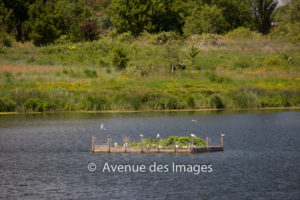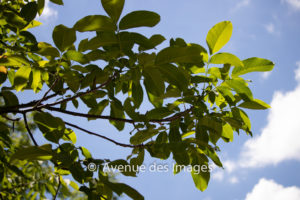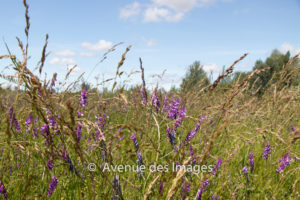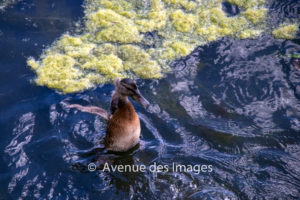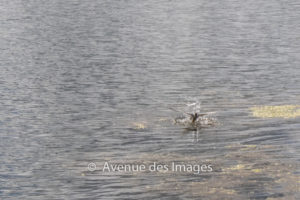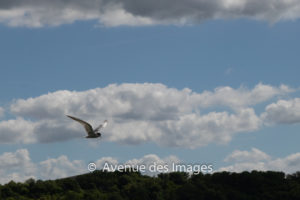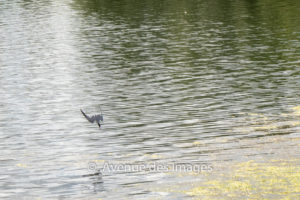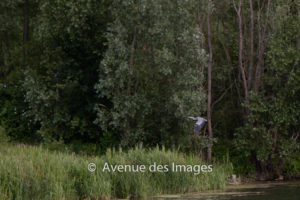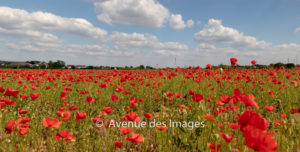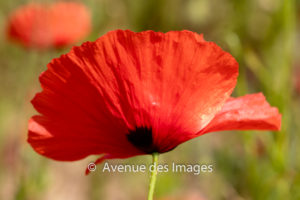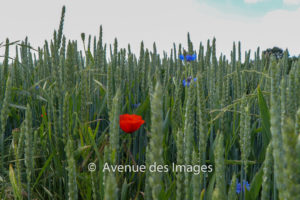A Summer morning gave me another chance to grab my versatile 18-135 mm f/3,5-5,6 zoom lens and Canon DSLR show you the possibilities when using a zoom lens. The weather was bright sunshine which presents some issues but makes a walk in the garden very enjoyable. The flowers, leaves, insects, the reflections on the pond were the ideal environment to get great photos and a source of inspiration. In this post I just want to show you the impact of using a zoom lens on the composition of the image.
The context
The above panorama shows the context. There is a path that goes all the way around the pond, with bridges at both ends. The view is particularly captivating from the bridges. But it is also beautiful from all sides. This means that people are often in the frame and can be a distraction from the natural beauty. Using a zoom lens, and patience, will allow you to capture the images when there are few or no people in the frame.
Above you can see people on the bridge and on the right hand side. The person in red, under the weeping willow tree, is the most bothersome as red really catches your attention.
First, whenever possible, set the ISO on your camera to 100, as I did here. This will reduce any potential for noise in the final image. Noise being a grainy aspect to the photograph.
Three examples
Here are 3 photographs from the bridge at the eastern bridge. They were taken with focal lengths set to 22mm, 56mm and 76mm.
If we compare these to the panorama we can see that the higher the focal length is the less we can appreciate the length of the pond. Distances are compressed. This is where the artist in you will decide the right balance between keeping the depth of field in the image, zooming to remove distractions, and focusing on details.
Clearly if the bridge is the subject of the photo the more you zoom the more of the bridge you will see. It is hardly visible at 22mm. But if you are taking a photo of a water lily pond, then 22mm really shows the pond in its surroundings.
My favourite here is the 56mm. Why, because it takes the gentlemen on the right out of the frame, it keeps the blue sky, the impression of a pond. The reflection on the waters surface of the sky is less overpowering.
Zooming even more
Changing the objective on my camera to allow me to zoom to 250mm allows me to focus on individual items in and around the pond. Here is a of 2 while lilies amongst their leaves. There are several insects in and around the flowers. If you look carefully there is a turquoise dragon fly just a short distance above the left lily.
I did another post on zooming earlier in the year which you can find here.
You can see more flowers from this garden in my flowers gallery, https://avenuedesimages.com/flowers-and-plants/
Some of my photos are available for purchase on my Adobe Stock store or directly below. There are other landscape photos here.

